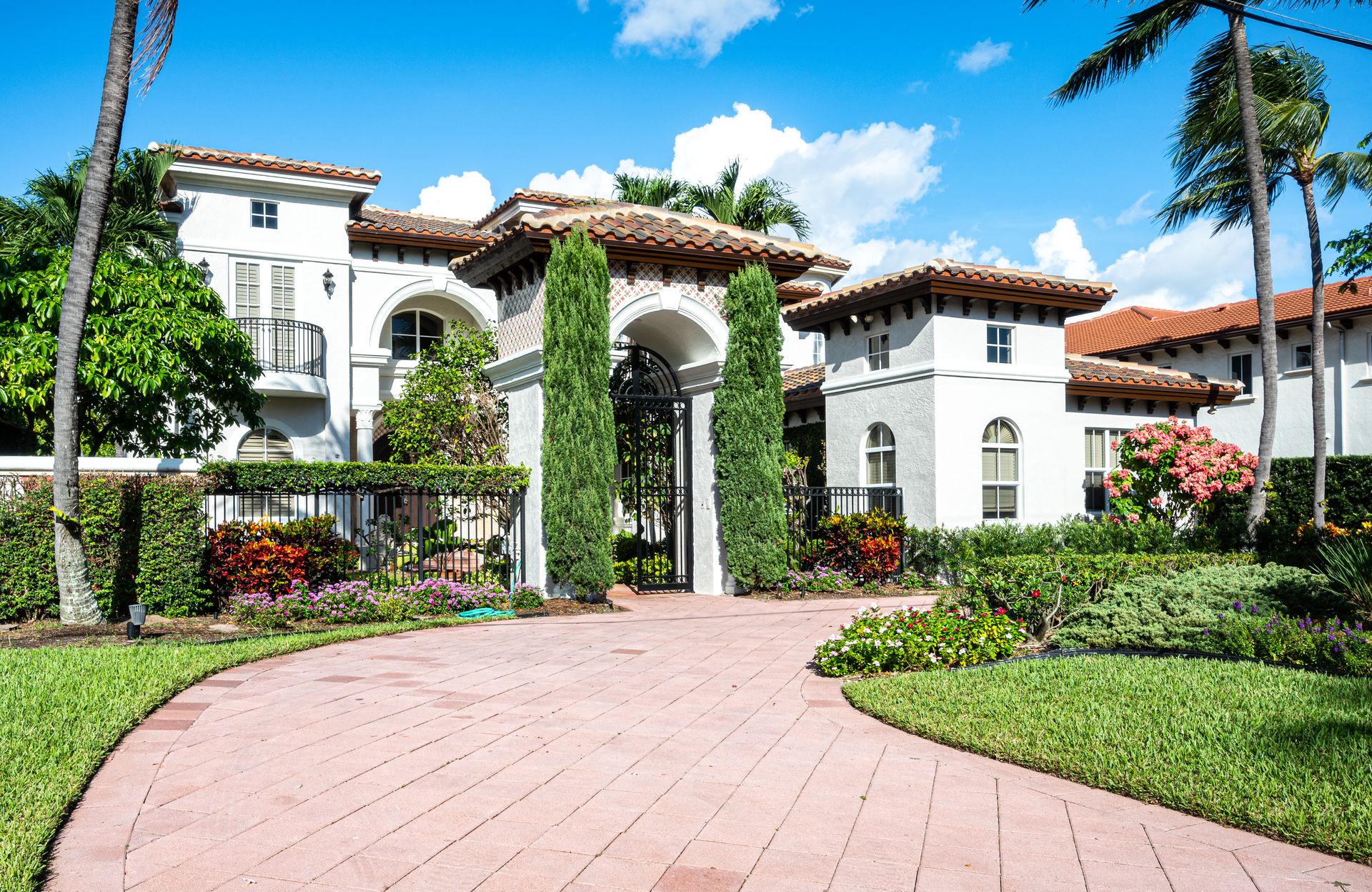If you’re considering building or buying a house in Florida, you’ll quickly find that the architectural diversity is both impressive and extensive. Florida is home to an array of architectural styles that reflect its rich history, diverse cultures, and unique climate.
From beach-inspired bungalows to luxurious Mediterranean villas and sprawling ranch homes, Florida’s architectural landscape offers something for every taste. To help you navigate this variety, here’s a comprehensive guide to the five most popular architectural styles in Florida homes today.
1. Coastal Contemporary
Coastal Contemporary architecture is perhaps the most recognizable style in Florida, particularly along its scenic coastlines. This modern style is designed to capture the relaxed, breezy vibe of beach life while incorporating cutting-edge design features. Coastal Contemporary homes are characterized by their minimalist design, clean lines, and open floor plans, all of which create a harmonious flow between indoor and outdoor spaces.
Key features include high ceilings, large windows, and an abundance of natural light, which contribute to a spacious, airy feel. Floor-to-ceiling windows are a common choice in Coastal Contemporary homes, allowing for unobstructed views of the ocean or surrounding landscapes. Sliding glass doors that open onto expansive decks or patios are another popular element, enabling seamless indoor-outdoor living—a crucial consideration for Florida’s beachside lifestyle.
Material choices in Coastal Contemporary homes often include sustainable woods, sleek metals, and glass, which lend a modern look while withstanding Florida’s humid climate. Neutral color palettes dominate, with shades of white, gray, and light blue to complement the natural surroundings. Weather-resistant materials, like aluminum and treated wood, are essential for maintaining durability against coastal elements.
One significant aspect of Coastal Contemporary architecture is its emphasis on eco-friendly design. Many of these homes integrate sustainable technologies like solar panels, rainwater harvesting systems, and energy-efficient windows, making them both beautiful and eco-conscious. This architectural style provides an ideal blend of luxury, functionality, and environmental responsibility, perfectly suited for Florida’s coastal lifestyle.

2. Mediterranean Revival
Mediterranean Revival architecture brings the charm of Southern Europe to Florida’s neighborhoods, giving the state a unique Old World appeal. With roots in Spanish, Italian, and Moorish architecture, Mediterranean Revival is known for its warm colors, detailed finishes, and romantic elements that capture Florida’s sunny, tropical atmosphere.
This architectural style is characterized by stucco exteriors and red clay-tiled, low-pitched roofs, which create a striking aesthetic while providing functional advantages, such as resistance to Florida’s heavy rainfall. These homes often feature large facades with symmetrical layouts, and intricate details around windows and doors. Wrought iron accents are also a hallmark, appearing as balcony railings, window grilles, and light fixtures.
Mediterranean Revival homes often boast inviting courtyards, perfect for creating private outdoor spaces filled with lush greenery and vibrant flowers. These courtyards serve as an extension of the indoor living area and provide a shady retreat from the sun. Inside, Mediterranean Revival homes feature grand arches, textured walls, and decorative tile work that add depth and character. Tile or terracotta floors and exposed wooden beams further enhance the Spanish-inspired ambiance.
This style flourished during Florida’s early 20th-century land boom, particularly in cities like Miami, Palm Beach, and Coral Gables, where developers aimed to recreate the allure of Mediterranean Europe. Today, Mediterranean Revival homes remain popular across the state, particularly in areas with a historic charm.

3. Spanish Colonial
While similar to Mediterranean Revival, Spanish Colonial architecture has its own distinct characteristics and a rich historical connection to Florida’s past. Spanish settlers introduced this style to the region in the 16th century, leaving a lasting architectural legacy. Spanish Colonial homes feature simple, rectangular designs with thick stucco walls that help keep interiors cool, a critical consideration for Florida’s subtropical climate.
The defining elements of Spanish Colonial architecture include low-pitched, red-tiled roofs, small balconies, and arched doorways. Wooden accents, such as dark wood doors and window frames, add rustic elegance, while iron fixtures and ornate tiles provide intricate detail. Spanish Colonial homes often have a timeless, earthy color palette with shades of white, tan, and terracotta, which blend seamlessly with Florida’s sandy landscapes.
These homes frequently feature enclosed courtyards that allow for private outdoor living spaces, often centered around a fountain or small garden. Inside, Spanish Colonial homes are known for their thick walls and small windows, which help maintain a cool interior. The rooms often open into one another without hallways, creating a flow that complements the home’s simplicity.
This style has seen a resurgence in recent years, especially in upscale coastal and inland neighborhoods. Its historical roots, practical features, and aesthetic appeal make it a timeless choice that aligns beautifully with Florida’s cultural and natural landscape.
4. Island Cottage
The Island Cottage home style captures the charm and ease of coastal living, bringing the tranquil ambiance of island retreats into residential spaces. This architectural style is characterized by its cozy, informal design and elements that reflect the simplicity and beauty of seaside landscapes.
Island Cottages are often enhanced with a coastal-inspired color palette, incorporating soft, airy hues like sandy beige, seafoam green, and light blues, which evoke the calm and serenity of the ocean. Materials like natural wood, shiplap walls, and weathered finishes contribute to a warm and welcoming atmosphere.
Inside, these cottages often feature open layouts that encourage a relaxed, flowy feel, with large windows to let in ample natural light. The décor tends to be simple yet thoughtful, with coastal accents such as wicker furniture, linen fabrics, and subtle nautical elements that reinforce the seaside vibe.
The Island Cottage is not only visually appealing but also functional, often designed with features that help it withstand coastal climates, such as durable, weather-resistant materials and elevated foundations. This home style creates a serene oasis for residents, providing a perfect getaway or everyday retreat that harmonizes with the surrounding landscape.

5. Ranch-Style Architecture
The Ranch-style home is a quintessentially American architectural style that gained popularity in the mid-20th century and remains a favorite across Florida. Known for its low-slung, single-story design, the Ranch style emphasizes open space, ease of access, and practicality. These homes are especially popular in suburban and rural areas of Florida, where land is more readily available.
Ranch homes typically feature an open floor plan, with spacious living areas that flow seamlessly into each other, making them ideal for family living. Large picture windows bring in ample natural light, while sliding glass doors open onto patios or backyards, extending the living space outdoors. Ranch homes often have an attached garage at one end, which adds convenience and additional storage.
The simplicity of Ranch-style architecture makes it an ideal choice for Florida’s climate. Many ranch homes are built with durable, weather-resistant materials that can withstand the state’s frequent rain and high humidity. The single-story layout also makes it easy to install features like screened porches or sunrooms, which are popular additions for enjoying Florida’s outdoor lifestyle without dealing with insects.
Another advantage of the Ranch style is its accessibility, which is why it is a popular choice among Florida’s senior population. With everything on a single level, Ranch homes offer easy mobility and a comfortable living environment. The straightforward design also makes these homes relatively easy to expand or remodel, allowing homeowners to adapt the space to their needs over time.

6. Victorian Architecture
Victorian architecture, while less common in Florida’s newer developments, is still prevalent in certain historic areas, particularly in Central Florida. This architectural style emerged during the Victorian era of the 19th century and is known for its ornate and decorative details. Victorian homes are easy to spot due to their steeply pitched roofs, intricate trim, and vibrant color schemes.
One of the defining features of Victorian architecture is its asymmetrical design, with turrets, towers, and bay windows that create a whimsical, almost storybook appearance. These homes often have elaborate porches with decorative railings, intricate spindlework, and patterned shingles. Inside, Victorian homes feature narrow hallways, tall windows, and high ceilings, with richly detailed moldings and trim that add a sense of grandeur.
Victorian homes are typically multi-story buildings with a narrow and tall profile, which helps maximize indoor space on small lots. The interiors are often lavishly decorated, with fireplaces, stained glass windows, and elaborate woodwork. While these homes can be more challenging to maintain due to their age and delicate details, they offer a unique charm and are treasured in historic districts.
Today, Victorian homes are often preserved as historic landmarks, and their architecture is celebrated for its craftsmanship and attention to detail. Neighborhoods with Victorian homes offer a glimpse into Florida’s past and provide a charming contrast to the state’s more modern architecture.
7. Art Deco Architecture
Art Deco architecture, famously showcased in Miami’s vibrant South Beach, is a celebration of the glamour and elegance of the 1920s and 1930s. This architectural style stands out with its sleek, streamlined shapes, bold color schemes, and striking geometric designs, creating an aesthetic that feels both timeless and chic.
Art Deco homes are known for their symmetrical facades, which are often accented by rounded corners and decorative details like zigzags, chevrons, and floral motifs that add depth and intrigue to the exterior. The design frequently incorporates materials like chrome, glass, and stucco to enhance its modern, polished look, while pastel colors and neon lights offer a playful twist that reflects Miami’s lively character.
Inside, Art Deco homes are often designed with high ceilings, bold statement pieces, and dramatic lighting to capture the movement’s commitment to sophistication and innovation. The interiors feature luxurious details—mirrors, glossy finishes, and metallic accents that reflect light and elevate the ambiance, evoking a sense of old Hollywood glamour.
Art Deco’s lasting allure lies in its fusion of modernity and artistry, making it a beloved part of Florida’s architectural legacy. Its retro charm and eye-catching aesthetics bring a touch of opulence and cultural heritage, offering residents a unique and stylish living experience that honors the past while embracing contemporary tastes.

Florida’s architecture is a testament to the state’s rich history, vibrant culture, and diverse influences. From the modern, light-filled spaces of Coastal Contemporary homes to the historic charm of Spanish Colonial and Victorian styles, each architectural style offers unique benefits tailored to Florida’s climate and lifestyle. Mediterranean Revival and Spanish Colonial styles transport residents to the scenic coastlines of Southern Europe, while Ranch-style homes offer practicality and accessibility, ideal for families and retirees alike.
When choosing a home in Florida, consider not only the aesthetics of each style but also its practicality and suitability for the local climate. For example, homes with stucco exteriors and tiled roofs, like Mediterranean Revival and Spanish Colonial, are well-suited to withstand Florida’s hot, humid weather and frequent storms. Coastal Contemporary homes, on the other hand, embrace modern energy-efficient features that help reduce environmental impact.
Ultimately, each architectural style reflects Florida’s unique fusion of natural beauty, history, and innovation. Whether you’re drawn to the sleek elegance of Coastal Contemporary design, the old-world allure of Mediterranean and Spanish Colonial homes, or the functional charm of Ranch-style architecture, there is no shortage of architectural inspiration to suit your preferences. Florida’s architectural diversity ensures that, whatever your taste, you’ll find a style that makes you feel at home in the Sunshine State.
No matter your style of home—whet her it’s a cozy Island Cottage , a sophisticated Art Deco gem, a Coastal Contemporary retreat, a charming Mediterranean villa, or a timeless Victorian residence— Tru Colors Contracting is here to help you maintain and revive both interiors and exteriors. From pressure washing and stucco repairs to painting and metal refinishing , our services are tailored to enhance the unique character of your home’s architectural style, ensuring it looks its best season after season.
Contact Us today to discuss your project!

